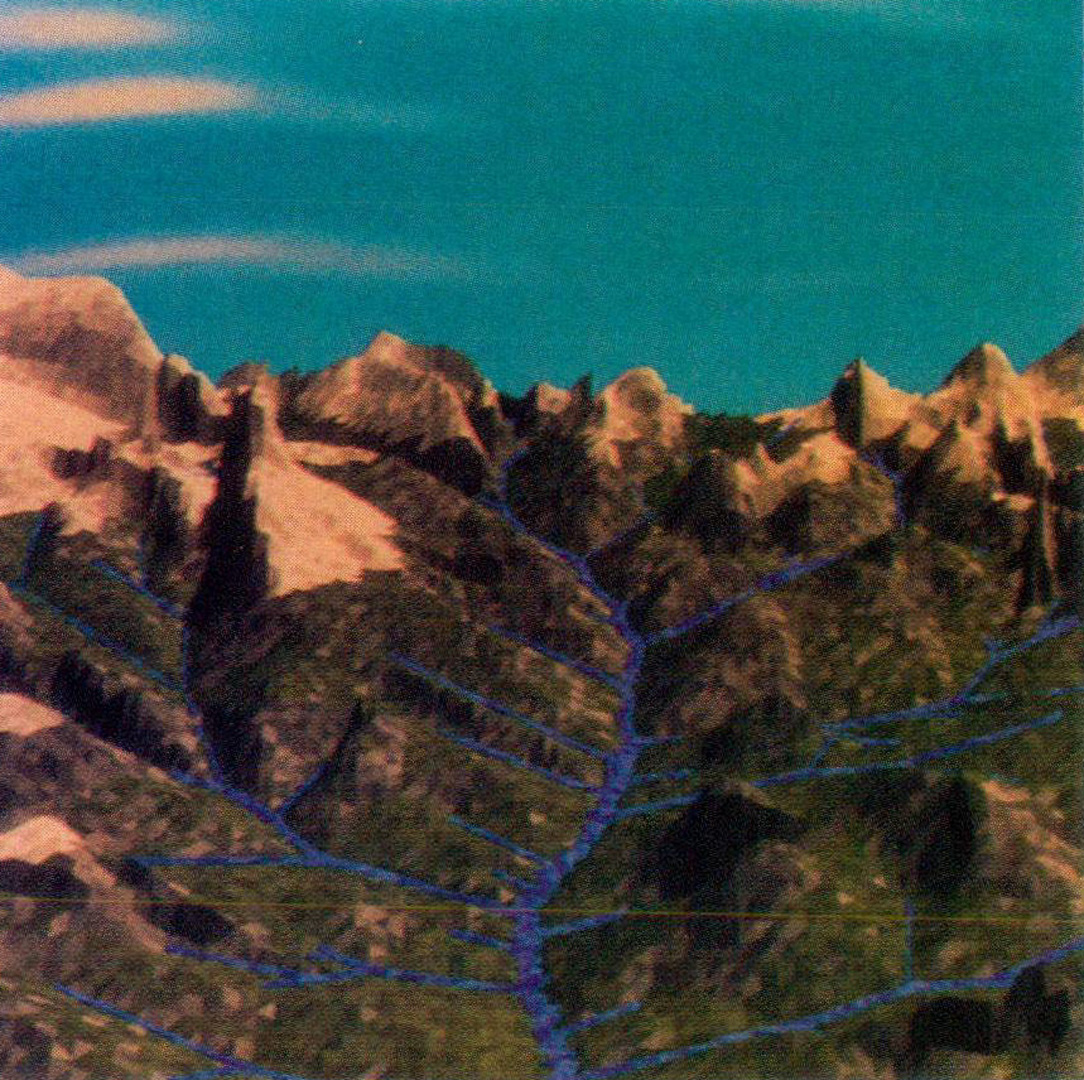“Terrain simulation using a model of stream erosion” by Kelley, Malin and Nielson
Conference:
Type(s):
Title:
- Terrain simulation using a model of stream erosion
Presenter(s)/Author(s):
Abstract:
The major process affecting the configuration and evolution of terrain is erosion by flowing water. Landscapes thus reflect the branching patterns of river and stream networks. The network patterns contain information that is characteristic of the landscape’s topographic features. It is therefore possible to create an approximation to natural terrain by simulating the erosion of stream networks on an initially uneroded surface. Empirical models of stream erosion were used as a basis for the model presented here. Stream networks of various sizes and shapes are created by the model from a small number of initial parameters. The eroded surface is represented as a surface under tension, using the tension parameter to shape the profiles of valleys created by the stream networks. The model can be used to generate terrain databases for flight simulation and computer animation applications.
References:
1. Abrahams, A. “Channel Networks: A Geomorphological Perspective”, Water Resour. Res., 20, 2 (February 1984), 161-168.
2. Abrahams, A. “Divide Angles and Their Relation to Interior Link Lengths in Natural Channel Networks”, Geographical Analysis, 12, 2 (April 1980), 161-168.
3. Bloomenthal, J. “Modeling the Mighty Maple”, Computer Graphics 19, 3 (July 1985), 305-311.
4. de Boor, C., A Practical Guide to Splines, Springer- Verlag, 1978.
5. Dunkerly, D. “Frequency Distributions of Stream Link Lengths and the Development of Channel Networks”, J. Geol. 85, (1977), 459-470.
6. Flint, J. “Stream Gradient as a Function of Order, Magnitude, and Discharge”, Water Resour. Res., 10, 5 (October 1974), 969-973.
7. Flint, J. “Tributary Arrangements in Fluvial Systems”, Am. J. Sci. 280, (January 1980), 26-45.
8. Fournier, A., Fussell, D., and Carpenter, L. “Computer Rendering of Stochastic Models”, Commun. ACM ,25, 6 (June 1982), 371-384.
9. Fournier, A. “Prolegomenon”, Siggraph ’87 Course Notes: The Modeling of Natural Phenomena”, July 1987.
10. Franke, R., “Scattered Data Interpolation: tests of some methods, Math. Comp. 38 (1982), 181-200.
11. Howard, A. “Simulation of Stream Networks by Headward Growth and Branching”, Geogr. Anal., 3, (1971), 29-50.
12. Howard, A. “Optimal Angles of Stream Junction: Geometric, Stability to Capture, and Minimum Power Criteria”, Water Resour. Res., 7, 4 (August 1971), 863- 873.
13. Kelley, A., Malin, M. “Three-Dimensional Digital Simulation of Drainage Basin Development: Modeling the Martian Valley Networks”, Reports of Planetary Geology and Geophysics Program – 1987, NASA Tech Mere. (in press).
14. Kirkby, M. “A Two-Dimensional Simulation Model of Slope and Stream Evolution”, In Hillslope Processes, edited by A. D. Abrahams, Alien and Unwin, Boston, 1986, 203-222.
15. Leopold, L. and Langbein, W. “The Concept of Entropy in Landscape Evolution”, Geol. Surv. Prof. Pap. 500-A, 1962.
16. Lewis, J. “Generalized Stochastic Subdivision”, ACM Trans. Graphics, 6, 2 (July 1987), 167-190.
17. Morisawa, M., Streams: Their Dynamics and Morphology, McGraw-Hill Inc. 1968.
18. Newell, M. E., Newell, R. G.and Sancha, T. L. “A Solution to the Hidden Surface Problem”, Proc. ACM Nat. Conf., (1972), 236-243.
19. Nielson, G. and Franke, R. “A Method for Construction of Surfaces Under Tension”, Rocky Mountain Journal of Mathematics 14, 1 (Winter 1984), 203-221.
20. Richards, K. “A Note on Changes in Channel Geometry at Tributary Junctions”, Water Resour. Res., 16, 1 (February 1980), 241-244.
21. Ritter, D., Process Geomorphology, Win. C. Brown, Dubuque, Iowa, 1978.
22. Schenck H. “Simulation of the Evolution of Drainage- Basin Networks with a Digital Computer”, J. Geophys. Res., 68, 20 (October 1963), 5739-5745.
23. Shreve, R., “Statistical Law of Stream Numbers”, J. Geol., 74, (1966), 17-37.
24. Smith, A. “Plants, Fractal, and Formal Languages”, Computer Graphics 18, 3, (July 1984), 1-10.




